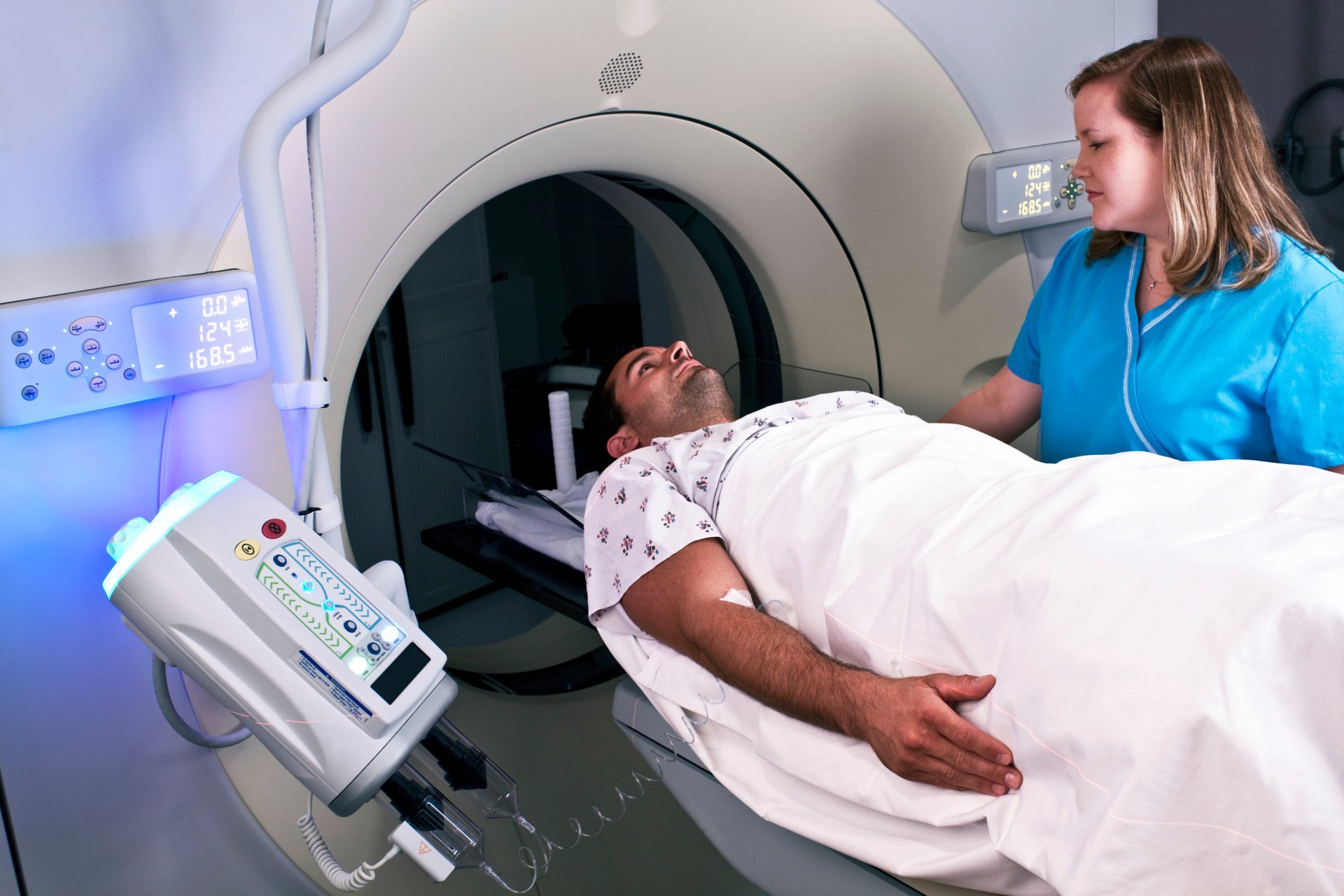
Scope of practice
A local CT technologist is in charge of operating radiologic equipment and positioning patients to achieve the best results. Other tasks they perform include:
- Maintaining patient records
- Interpreting doctor’s instructions for CT scans
- Following appropriate radiation safety protocols
- Preparing patients for imaging tests
- Collecting patient medical histories
- Explaining procedures
- Monitoring patients during scans
- Inspecting and maintaining scanning equipment
- Administering contrast media
- Ensuring patient safety and comfort
CT technologists don’t only focus on CT scans, however. They must also know how to perform ultrasounds and mammograms. Typically, these professionals work in hospitals and outpatient clinics.

Required education and training
To become a CT tech, first check to ensure that you know what your state’s licensure requirements are.
You’ll need to possess a high school diploma or GED. You can choose to pursue an associate degree, and many people opt to complete one of the most widely recognized certifications: the computed tomography certification via the American Registry of Radiologic Technologists.
Once you finish an accredited program, you’ll need to pass the certification exam to earn your credentials. If your state requires that you have a license, you will need to pass further tests and obtain continuing education credits.

CT tech salary and benefits
Your education level and training will impact the salary you receive as a local CT technologist. Your state’s rates will also be a factor.
Working with a staffing agency that helps you find the right positions means also receiving additional benefits. At Prolink, we offer life and health insurance, paid leave, retirement planning, and some tuition reimbursement.
CT technologist FAQs
A CT technologist must have an excellent understanding of anatomy and be able to quickly identify anomalies. They must also be well-versed in radiation safety protocols and how to operate the CT equipment correctly. To help patients remain calm during procedures, these professionals must also be able to easily communicate difficult concepts.
Once you receive your degree, you will need to meet further requirements to be able to receive credentialing from the American Registry of Radiologic Technologists. You’ll have to complete an additional 16 hours of education that must include at least one hour of patient care, procedures, safety, and image production.
There are also clinical requirements to meet for your CT certification. You’ll have to complete at least 125 CT scans under the supervision of a physician or registered radiologist.
The answer depends on whether you pursue an associate degree or not. If you do, the entire process can take between two and three years. You can expect a shorter timeline if you pursue an accredited program instead.
Start your local CT tech career with Prolink
Discover the world of opportunities awaiting you!
Complete the form to take the first step towards a fulfilling career.
When you partner with Prolink, you receive an industry-leading benefits package:
- Day-one health insurance and 401(k)
- Dental and vision coverage
- Short- and long-term disability
- Life insurance
- Exclusive perks and discounts
Apply for Your Next Position
Let us find your perfect fit. Connect with a recruiter today.






